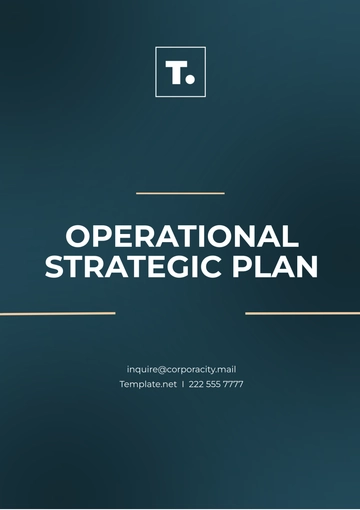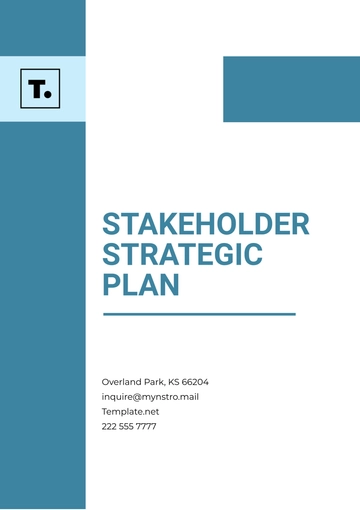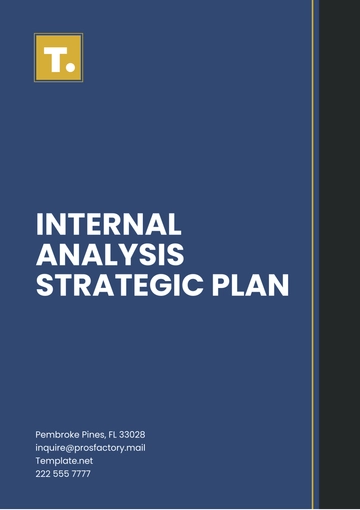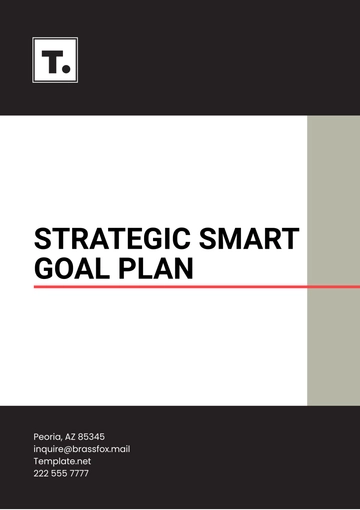Free Environmental Strategic Plan
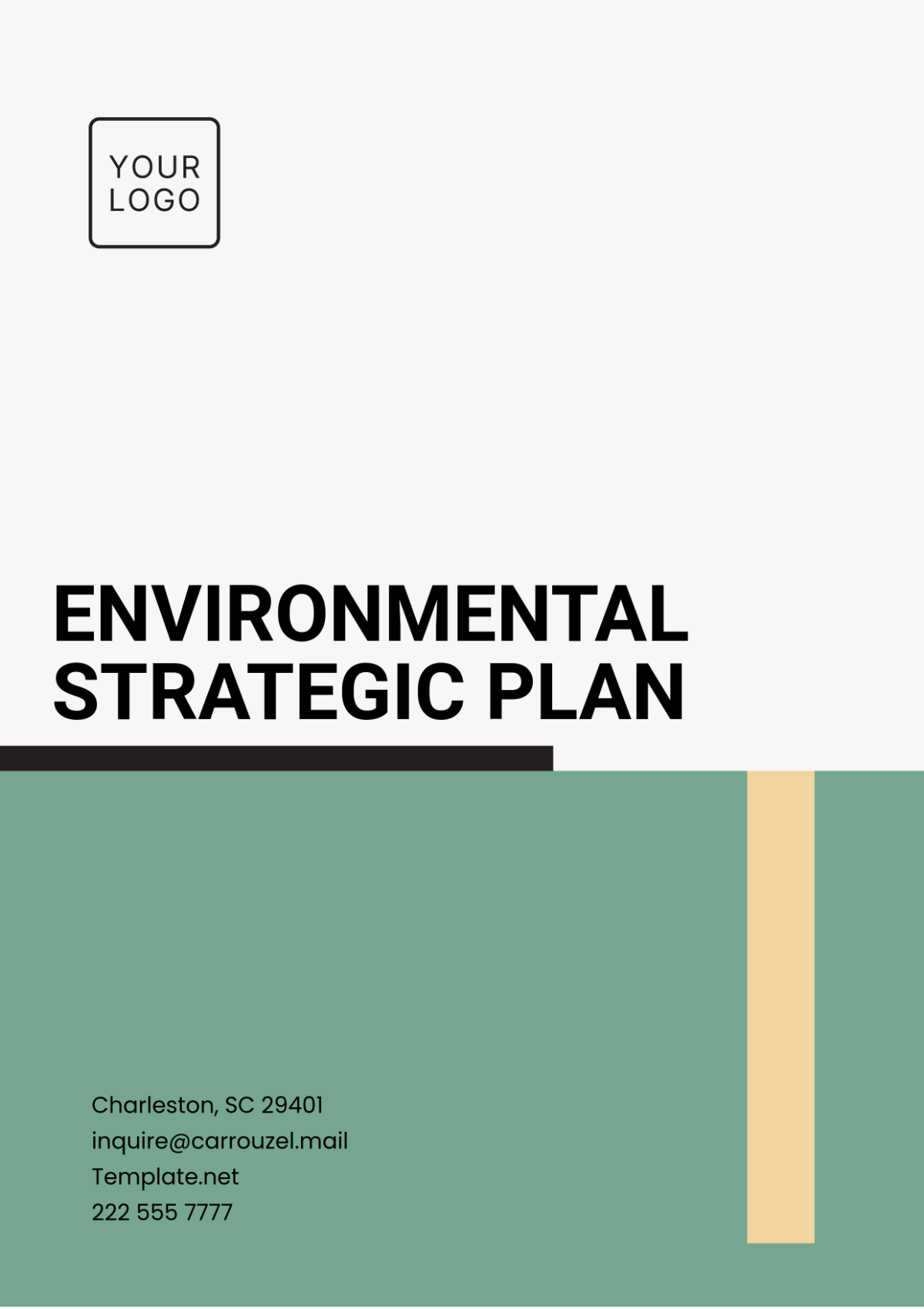
Prepared by: [Your Name]
I. Executive Summary
This Environmental Strategic Plan outlines our organization's commitment to reducing its environmental impact and promoting sustainability. It serves as a comprehensive guide for achieving long-term environmental goals through strategic actions, clear objectives, and performance metrics. Our mission is to incorporate ecological priorities into our practices, ultimately contributing to a healthier planet and fostering a culture of environmental responsibility within our organization. This plan also aligns with global sustainability frameworks, ensuring our practices contribute to international goals for climate resilience, biodiversity protection, and ecosystem conservation.
II. Vision and Mission
A. Vision
Our vision is to create a sustainable future for generations to come by drastically reducing our environmental footprint and integrating a mindset of ecological responsibility across all levels of our organization. We envision our company as a pioneer in sustainable business practices, promoting innovation and fostering partnerships that benefit both our community and the planet.
B. Mission
Our mission is to implement environmentally sustainable practices that minimize our environmental impact while actively engaging stakeholders in green initiatives. We aim to support global efforts to protect natural ecosystems, reduce pollution, and enhance biodiversity through targeted, high-impact actions that are both innovative and measurable. Additionally, our mission includes collaborating with other industries and community leaders to advance environmental goals.
III. Environmental Assessment
A. Current Environmental Impact
The following areas highlight our current environmental impact:
Energy Consumption and Greenhouse Gas Emissions: Our operations consume an estimated 100,000 MWh annually, resulting in approximately 20,000 tons of CO₂ emissions.
Waste Production and Management: Our facilities produce around 1,000 tons of waste annually, of which only 40% is currently recycled or composted.
Water Usage and Conservation: Water consumption levels average 500,000 gallons annually, with limited conservation measures in place.
Ecosystem Disturbances: Our supply chain processes have led to moderate impacts on local ecosystems, particularly in areas of resource extraction and transportation.
B. Risks and Opportunities
Risks
Regulatory Non-Compliance: As environmental regulations become stricter, failing to meet standards could result in penalties and legal implications.
Reputation Damage: Public awareness around sustainability is high, and a lack of proactive environmental initiatives may damage our brand reputation.
Resource Scarcity: Increasing water and material shortages could drive up operational costs and limit production capabilities.
Opportunities
Innovation in Sustainability Practices: Adopting cutting-edge technologies for waste reduction and energy efficiency presents an opportunity for differentiation in the market.
Cost Savings: Implementing eco-friendly measures could reduce resource consumption, leading to substantial financial savings over time.
Market Appeal: Increasing demand for sustainable products offers new business opportunities for environmentally friendly products and services.
IV. Goals and Objectives
A. Long-term Goals
Reduce Greenhouse Gas Emissions by 40% by 2060 – Transition to renewable energy sources, improve energy efficiency, and innovate within operations to meet this target.
Achieve Zero Waste to Landfill by 2055 – Through extensive waste management strategies, recycling programs, and partnerships with waste-to-energy facilities, aim to eliminate landfill waste completely.
Enhance Water Efficiency by 30% by 2058 – Adopt advanced water-saving technologies, optimize water use in production, and reduce water dependency across all departments.
B. Short-term Objectives
Conduct a Baseline Environmental Impact Assessment by Q2 2050 – Develop a clear picture of our current environmental impact to inform strategic decisions and set accurate benchmarks.
Implement a Waste Segregation System Across All Facilities by Q4 2050 – Introduce and monitor recycling and composting practices across all branches to improve waste diversion rates.
Initiate Employee Training Programs on Sustainability by Q1 2051 – Educate employees on energy-saving techniques, sustainable practices, and personal responsibility toward environmental goals.
V. Action Plan
A. Energy Management
Upgrade to Energy-Efficient Technology: Retrofit existing equipment with high-efficiency models, reducing energy consumption in daily operations by 25%.
Implement Renewable Energy Solutions: Install solar panels at all company-owned facilities and explore wind and geothermal options for areas with high energy needs.
Develop an Energy Conservation Program: Encourage employees to adopt energy-saving practices through education and incentives.
B. Waste Reduction
Introduce Comprehensive Recycling and Composting Programs: Expand recycling bins to all company premises, and partner with local composting facilities for organic waste.
Waste-to-Energy Partnerships: Develop relationships with waste-to-energy providers to turn waste that cannot be recycled or composted into usable energy.
Minimize Packaging Waste: Collaborate with suppliers to reduce packaging materials, focusing on biodegradable or recyclable options where possible.
C. Water Conservation
Install Water-Saving Fixtures: Replace outdated faucets, toilets, and irrigation systems with water-efficient models.
Promote Water-Efficient Practices: Train employees on responsible water use in day-to-day tasks and offer incentives for departments that achieve water reduction targets.
Implement Rainwater Harvesting Systems: In regions with seasonal rainfall, establish rainwater harvesting systems for irrigation and industrial use.
VI. Performance Metrics
Metric | Baseline | Target | Target Date |
|---|---|---|---|
Greenhouse Gas Emissions (tons) | 20,000 | 12,000 | 2060 |
Waste to Landfill (tons) | 1,000 | 0 | 2055 |
Water Usage (gallons) | 500,000 | 350,000 | 2058 |
Each metric will be reviewed annually to track our progress, identify gaps, and make adjustments as needed to meet our environmental objectives.
VII. Implementation Timeline
Q1 2050: Initiate stakeholder engagement and develop detailed project plans.
Q2 2050: Begin baseline environmental assessments for emissions, waste, and water usage.
Q3 2050: Launch pilot projects for waste reduction and recycling across selected facilities.
Q4 2050: Start implementing energy management systems, including renewable energy sources.
Q1 2051: Roll out employee training programs on environmental responsibility.
VIII. Budget and Resources
The estimated annual budget allocation for sustainability projects is $5 million, covering personnel, technology upgrades, and external consultancy services. The budget will be reviewed annually and adjusted according to project milestones and new environmental opportunities.
IX. Monitoring and Evaluation
To ensure accountability and transparency, regular monitoring will occur through bi-annual environmental audits. Evaluations will assess progress against performance metrics, identify areas for improvement, and update stakeholders on achievements. We will conduct comprehensive reviews every two years to adjust targets and refine strategies, aligning our Environmental Strategic Plan with emerging technologies, new regulations, and best sustainability practices.
- 100% Customizable, free editor
- Access 1 Million+ Templates, photo’s & graphics
- Download or share as a template
- Click and replace photos, graphics, text, backgrounds
- Resize, crop, AI write & more
- Access advanced editor
Plan for a greener future with our Environmental Strategic Plan Template from Template.net. This customizable, editable template offers a structured approach to sustainability. Whether you're focusing on reducing your carbon footprint or developing eco-friendly initiatives, this template helps you define clear environmental goals and track your progress. Editable in our AI Editor Tool, it’s easy to adjust your plan to align with your specific environmental objectives and organizational priorities.


















